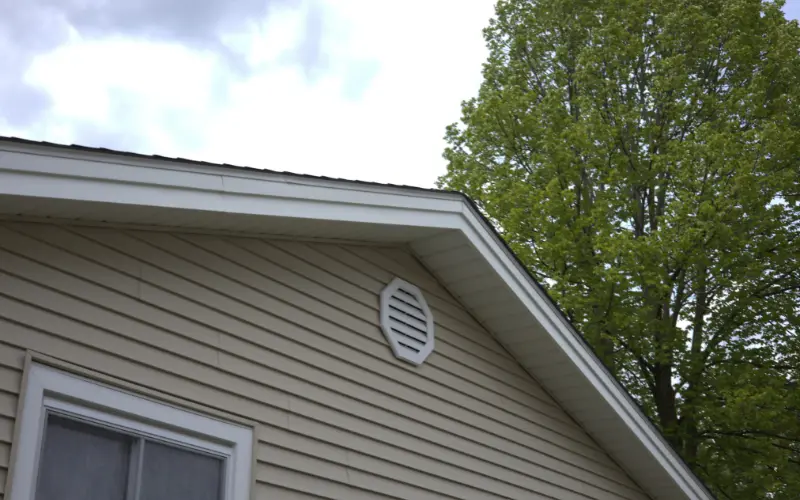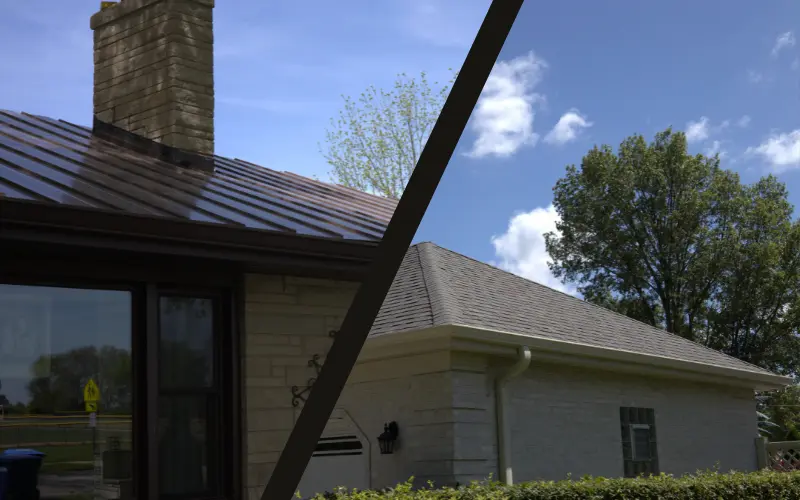Yes, a new roof increases home value, typically adding $12,000 to $20,000 and recouping 60-68% of replacement costs. Roof replacement improves curb appeal, passes inspections, and eliminates buyer concerns. Material choice, local market conditions, and timing affect ROI. A new roof prevents sale delays, attracts more offers, and positions your property competitively.
How Much Value Does a New Roof Add?
The numbers vary based on where you live and what you install, but national averages give us a solid baseline. An asphalt shingle roof replacement costs between $8,000 and $15,000 for an average-sized home. That same replacement adds roughly $12,000 to $20,000 in home value, depending on local market conditions.
Metal roofing runs higher, typically $15,000 to $30,000, with value increases in the $18,000 to $25,000 range. Premium materials like slate or tile? You're looking at $30,000 to $60,000+ in costs, though value appreciation doesn't scale proportionally (more on that in a moment).
Here's what actually drives those numbers: buyer's perception, inspection results, and financing requirements. A new roof isn't just a number on an appraisal. It's a green light for buyers who see a recent roof replacement as a sign they won't have to face that expense for 15 to 25 years. That peace of mind translates directly into offers, fewer contingencies, and faster closings.
When Does Roof Replacement Make the Most Financial Sense?
Not every situation calls for a full roof replacement before selling. Context matters.
Replace your roof before selling if:
- Your roof is 18+ years old (asphalt shingles)
- You see multiple missing, curling, or damaged shingles
- There's visible sagging or structural concern
- You're in a competitive market where buyers have options
- Inspection issues will likely kill deals or force price reductions
You might hold off if:
- Your roof is under 10 years old with minimal wear
- You're selling in a hot market where homes move fast regardless
- You have recent documentation of repairs or partial replacements
- Cash offers are common in your area (fewer inspection hurdles)
The timing calculation comes down to this: Will buyers discount your asking price by more than the replacement cost? In most cases, they will. Buyers pad their estimates. A roof that needs $12,000 to replace becomes a $20,000 negotiation point, because nobody trusts contractor estimates they haven't gotten themselves.
That math alone justifies the investment in many scenarios.
What Buyers Actually Look For in a Roof

Buyers don't climb ladders with moisture meters (though inspectors do). They look at your roof from the street and make snap judgments about maintenance and care. Fair or not, that first impression sets the tone for everything that follows.
Curb appeal matters more than most sellers realize. A clean, uniform roof with straight lines and consistent color reads as "well maintained." Patchy repairs, discolored sections, or visible wear patterns read as "problem property." Buyers start looking for other deferred maintenance issues before they even walk through the front door.
Then comes the inspection. Modern home inspections dig deep into roof condition: remaining lifespan estimates, signs of leaking, flashing condition, ventilation adequacy, and code compliance. One failed roof inspection can derail an entire transaction. Buyers either walk away or demand credits that exceed actual replacement costs.
Financing adds another layer. FHA and VA loans have specific roof requirements. Lenders won't approve loans on homes with roofs in poor condition. Your buyer pool shrinks dramatically when conventional cash buyers are your only option. A new roof reopens those financing avenues and expands your market.
The ROI Reality: Recouping Your Investment
Let's talk about realistic return expectations. National data from remodeling cost vs. value studies shows roof replacement ROI hovering between 60 and 68 percent. That means spending $15,000 might add $10,000 to your sale price. On paper, you're "losing" $5,000.
But that math misses crucial factors. First, you're comparing replacement cost to added value without outside effects. The real comparison should be: replacement cost vs. price reduction without a new roof. Buyers negotiating after a bad inspection report don't just subtract the replacement cost. They add a buffer, factor in inconvenience, and push for additional concessions. That $15,000 roof problem becomes a $25,000 discount, easily.
Second, speed matters. Homes with obvious deferred maintenance sit longer on the market. Every extra week holding costs you in mortgage payments, insurance, utilities, and opportunity cost. A new roof can shorten your market time by weeks or months. Those holding costs add up fast.
Third, offer quantity increases value. Multiple offers drive prices up through competition. A house with a questionable roof gets fewer offers, less competition, and lower final prices. A house with a brand new roof? That attracts serious buyers who make strong offers because they see less risk.
The ROI conversation misses the point when you frame it purely as added value. The real return comes from avoided discounts, faster sales, and stronger negotiating positions.
Material Choices and Their Impact on Value
Not all roofing materials deliver equal value returns. Your material choice should match your home's market position and buyer expectations.
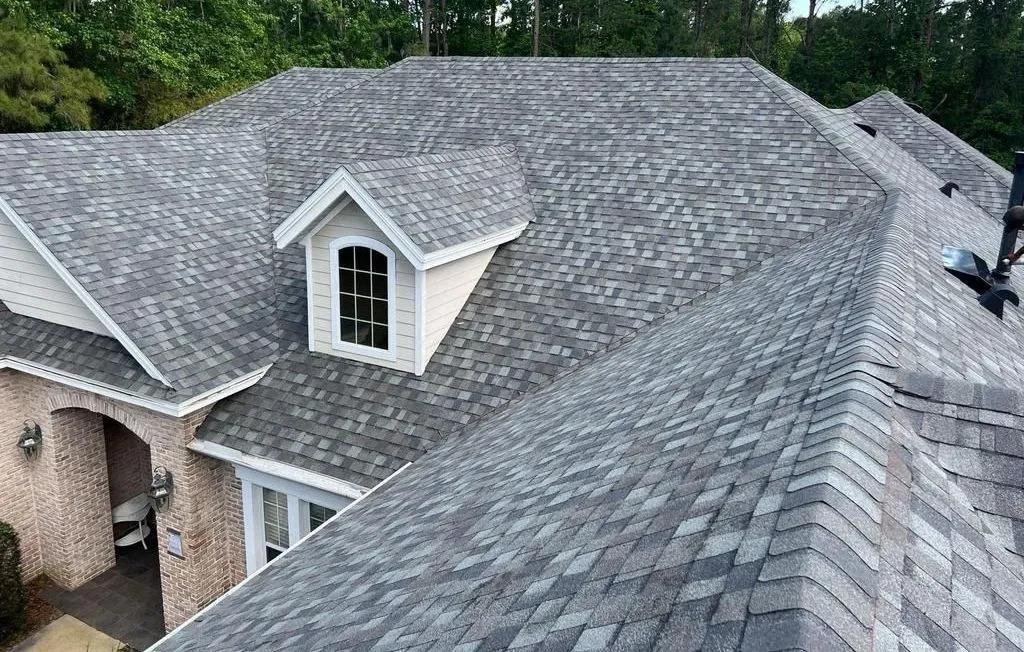
Asphalt Shingles
Still the standard for most residential properties. Cost-effective, widely accepted, and perfectly adequate for mid-range homes. Buyers expect them, inspectors know how to evaluate them, and replacement costs stay reasonable. Value impact is solid and predictable.

Architectural Shingles
A step up from basic three-tab shingles. Better appearance, longer warranties (usually 30 to 50 years), and improved durability. The upgrade cost is modest ($2,000 to $4,000 more than basic shingles), and the value return often justifies it, especially in $300,000 to $600,000 price ranges.

Metal Roofing
Growing in popularity for good reason: longevity (40 to 70 years), energy efficiency, and low maintenance. Higher upfront costs don't always translate to proportionally higher value in some markets, though. Works best in areas where metal roofs are common and buyers understand the benefits. In traditional shingle markets, you might not recoup the premium.
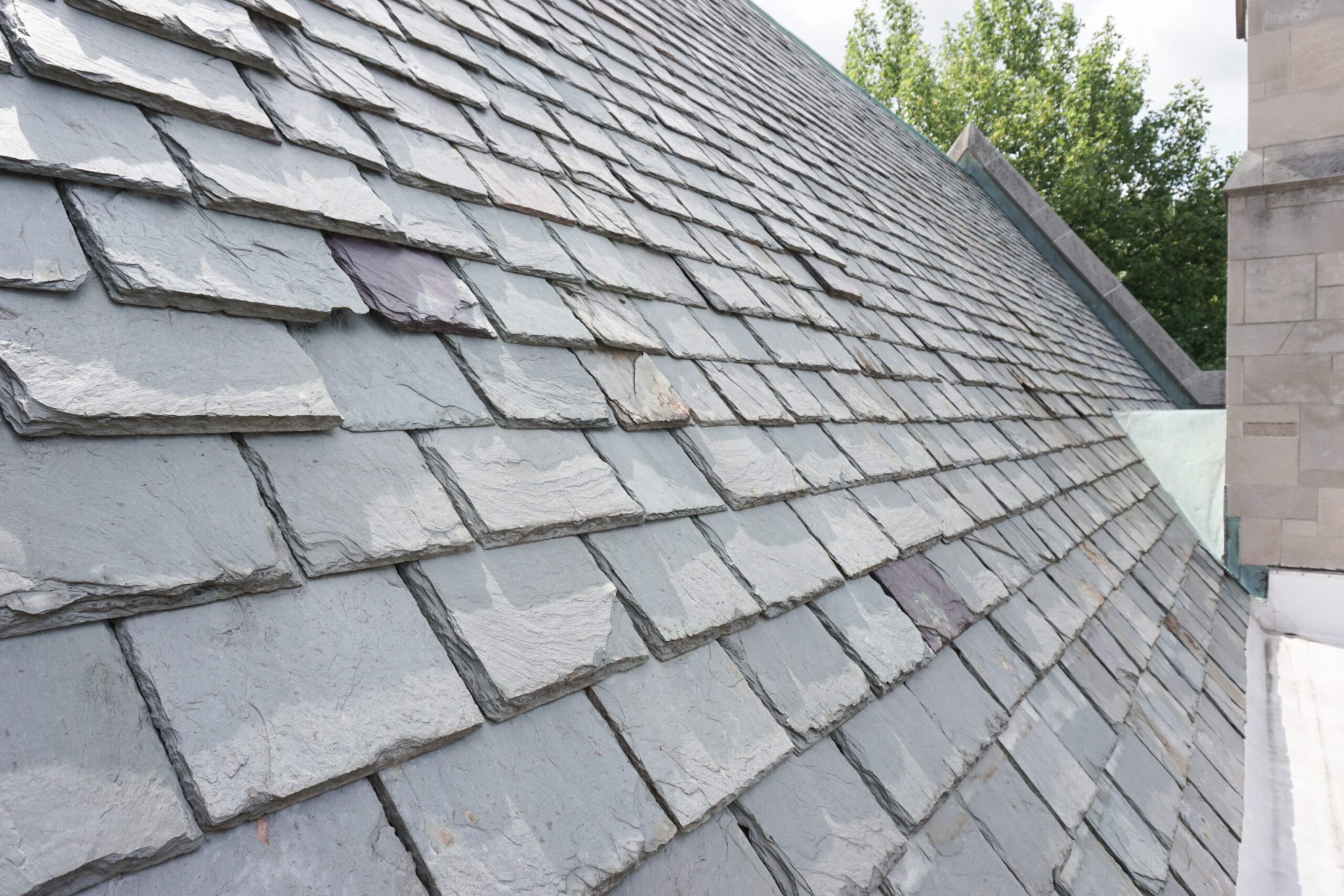
Premium Materials (Slate, Tile, Cedar)
These materials signal luxury but rarely deliver ROI that matches their cost. Install a $50,000 slate roof on a $400,000 house, and you'll struggle to recoup even half that investment. Premium materials work when your property and neighborhood already justify them. Otherwise, you're over-improving for your market.
Match your material choice to neighborhood standards. Look at comparable recent sales. If every house on your street has asphalt shingles, a metal roof won't necessarily command a premium. It just makes you the outlier.
Timing Your Roof Replacement: Before or After Sale?
This decision hinges on your specific circumstances and local market dynamics.
Replace your roof before listing if:
You need to maximize sale price and minimize negotiation friction. Pre-sale replacement lets you control costs (you choose the contractor and materials), market the new roof as a selling point, and eliminate a major buyer objection before it becomes a problem. Your listing photos show a fresh roof, your property description highlights it, and buyers feel confident from day one.
Consider selling without a roof replacement if:
You're in a seller's market where inventory is scarce and buyer competition is fierce. Some sellers in hot markets successfully price properties below market to account for roof condition, attracting investors or buyers with renovation plans. This works when you have clear pricing strategy and full transparency about roof condition. Discount appropriately (at least replacement cost plus 20 percent), and you might move faster.
Timing within the year matters less than you'd think. Roofing contractors are busiest in late spring and summer, which means prices might tick higher and scheduling gets tighter. Fall installation works great: weather is usually cooperative, contractors have better availability, and you're set up for winter listing season when serious buyers shop.
One caution about partial repairs: they rarely satisfy buyers or inspectors. A few new shingles on an old roof still reads as "old roof" to everyone involved. If you're making repairs significant enough to mention, you're probably better off with full replacement.
Beyond Home Value: Other Benefits Worth Considering
Value appreciation isn't the only reason to replace your roof before selling. Other practical benefits factor into the decision.
Energy efficiency improvements show up in utility bills and home comfort. Modern roofing materials reflect more heat, provide better ventilation, and reduce cooling costs. That's a talking point during showings and a real benefit for buyers calculating monthly costs.
Insurance clarity helps too. Some buyers struggle to get homeowner's insurance on properties with roofs over 20 years old. Premiums go up, and coverage options decrease. A new roof eliminates those insurance complications entirely. Your buyer doesn't face higher premiums or coverage denials, which means one less reason to negotiate or walk away.
Warranty transferability adds value that doesn't show up in appraisals. Most roofing warranties transfer to new owners, giving buyers decades of coverage against defects and installation issues. That's real protection that makes your property more attractive than comparable homes with older roofs.
Code compliance is huge and often overlooked. Roofing codes change over time. An old roof might not meet current standards for wind resistance, fire rating, or ventilation. Replacement brings everything up to code, which smooths inspection processes and reduces liability concerns. Buyers don't inherit someone else's code violations.
Warning Signs That You Can't Wait
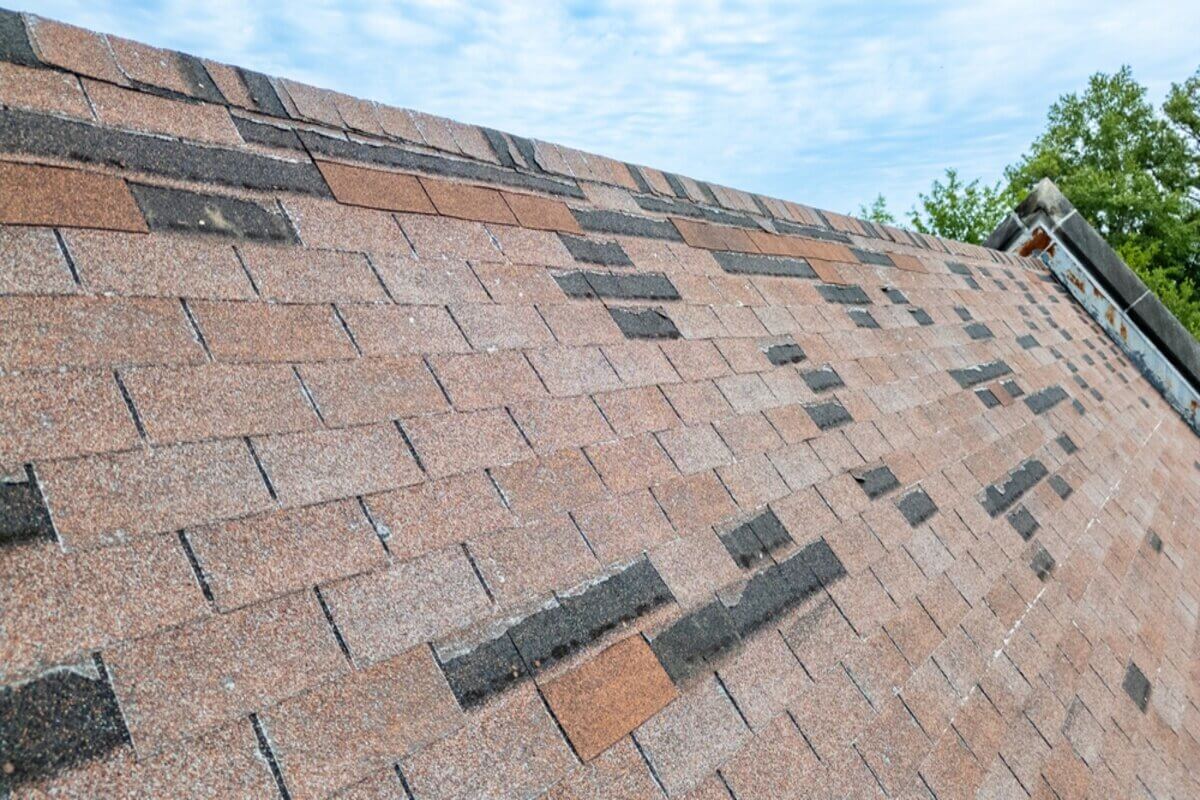
Some roof conditions demand immediate attention regardless of market timing or ROI calculations. Delaying replacement when these signs appear costs more in the long run.
Missing or damaged shingles expose underlayment and decking to weather damage. Water infiltration leads to rot, mold, and structural issues that turn a $15,000 roof replacement into a $30,000 roof and decking overhaul. Catching problems early saves money.
Granule loss on asphalt shingles (you'll see them in gutters and downspouts) means your shingles are near end-of-life. Once protective granules wear away, UV damage accelerates and shingles fail quickly. If you're seeing significant granule accumulation, replacement is overdue.
Sagging or uneven rooflines indicate structural problems beyond the shingles themselves. This requires immediate professional assessment. Attempting to sell with visible structural issues tanks your sale price and drives away qualified buyers. Fix it before listing, period.
Active leaks or water stains inside your home create disclosure obligations and inspection red flags. Even if you patch the leak, evidence of water damage must be disclosed. Buyers will assume the worst and negotiate accordingly. Full roof replacement combined with documented repairs to any interior damage is the only clean solution.
Daylight visible through roof boards when you're in the attic means your roof deck has gaps or damage. That's a safety issue and an immediate concern. No buyer will proceed without addressing this.
Making the Decision: Should You Replace Before Selling?
Let's cut through the complexity and give you a decision framework.
Calculate your breakeven using these questions: What's your roof replacement cost? (Get three quotes.) What's your estimated price reduction if you sell as-is? (Ask your real estate agent for comps with and without roof issues.) How long will your property sit on market with a questionable roof? (Again, ask your agent about average days on market for similar properties.) Add up avoided discounts plus holding costs, and compare that to replacement cost.
In most markets, when your roof is over 15 years old or showing clear wear, the math favors replacement before listing. You'll recoup most of the cost through higher sale prices and faster closing, and you'll avoid the nightmare of renegotiations during escrow.
If you're replacing, do it right. Get proper permits, use licensed contractors, and keep all documentation. Warranties matter. Permits matter. Paper trails matter. Buyers want to see that the work was done correctly and legally. Cutting corners to save $1,000 will cost you $5,000 in negotiation leverage.
Consider your local market carefully. A roof replacement in a strong seller's market with low inventory might not deliver the same returns as the same replacement in a buyer's market with high inventory. Scarcity affects value perception. When buyers have limited choices, they overlook roof concerns more easily. When they have 50 options, your roof condition becomes a differentiator.
Your timeline matters too. If you need to sell within 30 days, you might not have time for replacement (most projects take 2 to 4 weeks when you factor in permits, scheduling, and weather delays). If you're planning a spring listing and it's currently fall, you have time to replace strategically.
What to Do Next
Start with a professional roof inspection, even if you're not seeing obvious problems. A thorough inspection costs $200 to $500 and gives you a clear picture of actual condition, not guesswork. You'll get remaining lifespan estimates, repair recommendations, and documentation you can share with your real estate agent.
Talk to your agent before making decisions. Experienced local agents know exactly how buyers in your market react to roof condition. They can pull data on how long properties with roof issues sit compared to move-in ready homes. They'll also help you price replacement costs against likely buyer demands.
If replacement makes sense, get at least three written quotes from licensed, insured contractors. Verify licenses (who would've thought how many unlicensed crews are out there), check references, and review warranty details. Cheaper isn't always better when you're selling soon after. You need quality work with transferable warranties and proper documentation.
Keep every receipt, permit, and warranty document. Create a "roof replacement" folder that transfers to the buyer at closing. That paper trail adds credibility and gives your buyer confidence. It's proof of investment and care.
Time your listing strategically around the replacement. Don't list immediately after installation. Give the project 2 to 4 weeks to resolve any punch-list items, let warranties finalize, and ensure everything is fully complete. List with professional photos that showcase your new roof prominently.
A new roof increases home value, but more importantly, it removes barriers. It eliminates buyer objections, speeds up sales, and protects you from negotiation disasters during escrow. The question isn't really "does it add value?" The question is "can you afford not to replace it before selling?" In most scenarios, the answer is no.

.webp)

